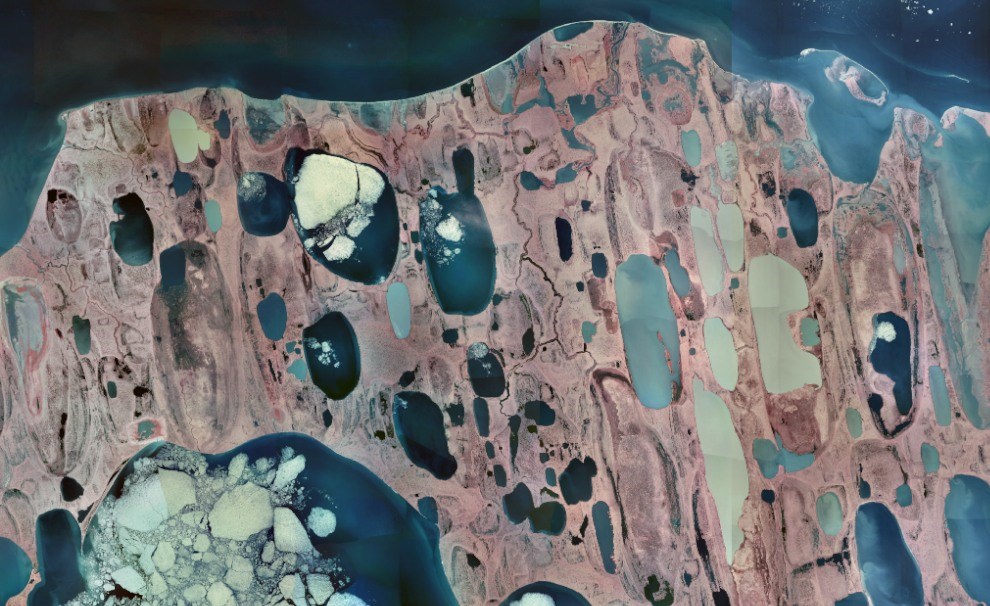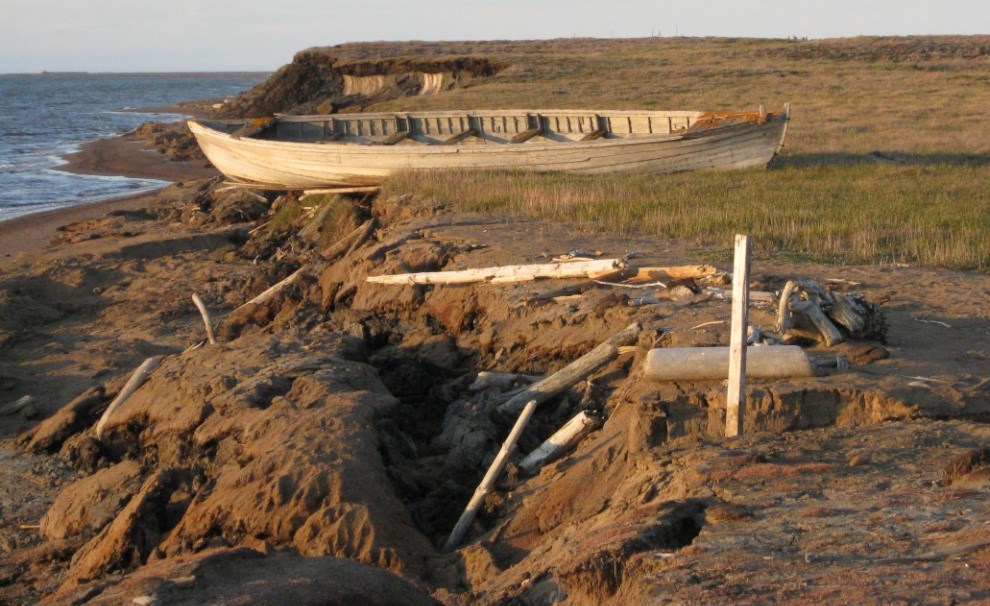Part of a series of articles titled Coastal Geomorphology—Storm Types.
Previous: El Niño and La Niña
Article

USGS image.
Arctic storms erode and re-create landscapes. In Alaska, such storms can relocate coasts, islands, or any sediment that is not frozen into place. These storms are larger than hurricanes, sometimes spreading a quarter of the distance across the Bering Sea—more than 77,200 square miles (200,000 km2). These storms bring massive amounts of precipitation in the form of heavy snows to the Alaskan coastline. If sea ice, which locks away moisture from interaction with the atmosphere, did not form, arctic storms would deposit so much snow in Alaska and other arctic region to make them nearly uninhabitable.
When arctic storms hit, the sea responds dramatically. Waves wash over the small outlying islands of the Alaskan coast, sometimes washing these islands away. The waves break apart the islands and sediment gets entrapped in the water. When the storms start to calm down, the water deposits the sediment in layers and mounds. When these deposits rise above sea level, new islands form, generally just downwind of the previous position.

NASA image.
For most of the year, large portions of the Alaskan coast—nearshore waters and land—are frozen together. This frozen coast creates a protective barrier between the open ocean and inland areas, lessening the impact of storms. However, in some parts of Alaska, this frozen zone (sea ice and terrestrial permafrost) has begun to melt away. As a result, coastal processes, particularly during storms, are eroding away huge pieces of land, in some places more than 25 feet (8 m) per year. This loss of land is severely impacting the lives of people living along these coasts. In some Alaskan national parks, such as Bering Land Bridge National Preserve, land loss equates to important cultural resources being swept out to sea. Researchers and park managers are working together to mitigate the situation and preserve significant historical artifacts within these National Park Service lands.
Part of a series of articles titled Coastal Geomorphology—Storm Types.
Previous: El Niño and La Niña
Last updated: June 4, 2019